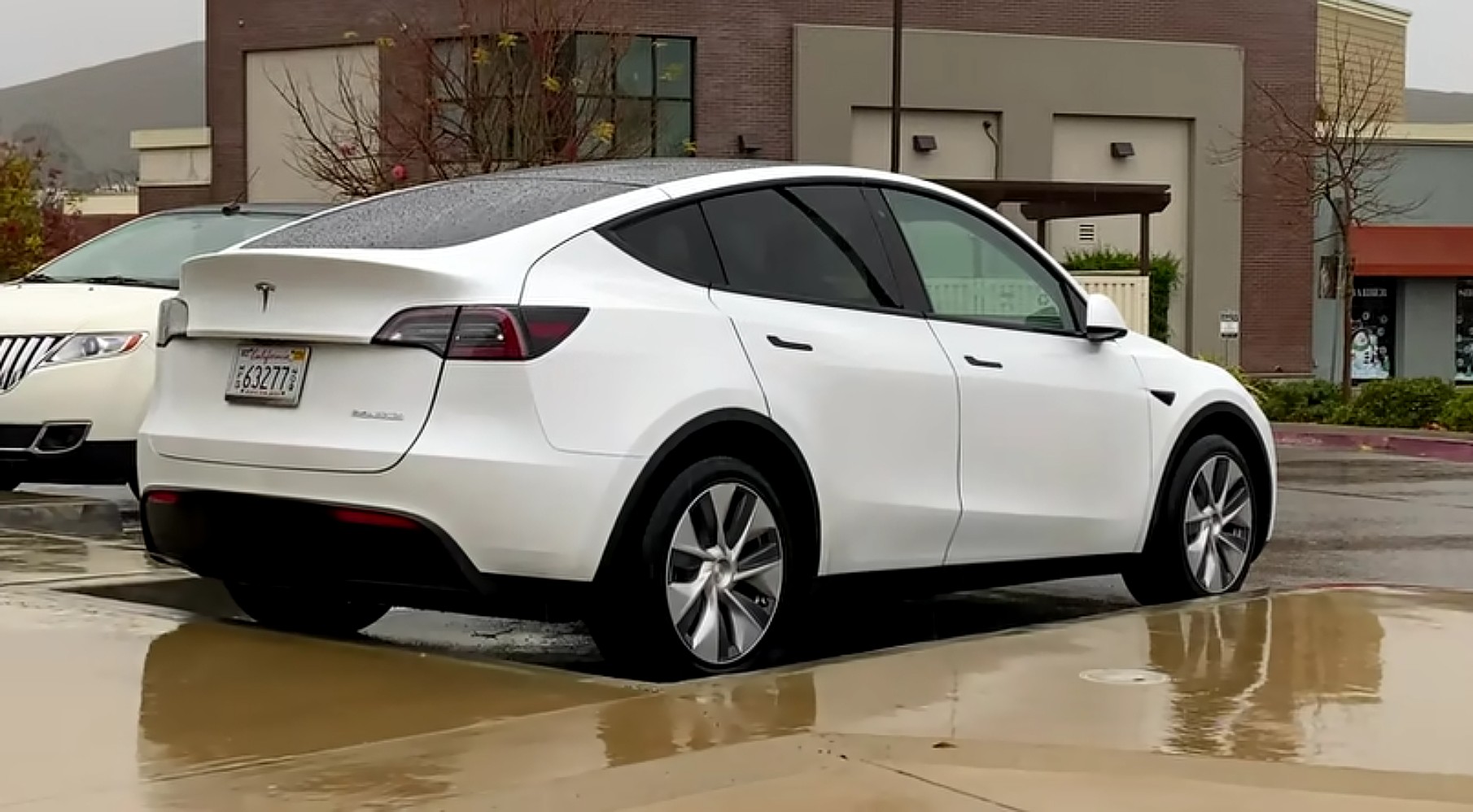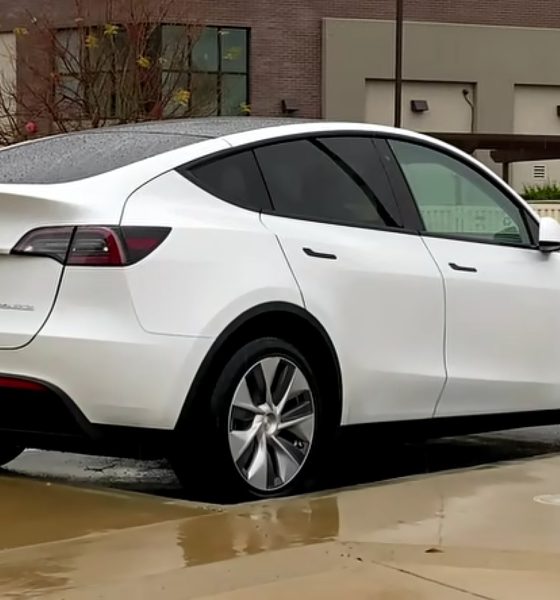

News
Tesla's lead in batteries and energy efficiency validated by Consumer Reports
Tesla’s lead in electric car batteries and energy efficiency was recently acknowledged fully by Consumer Reports, a publication that has extensively tested the company’s vehicles and features over the years. CR’s recognition was partly encouraged by the range of the Model Y, which was improved by Tesla as the crossover neared its release.
The Tesla Model Y Performance was initially announced with a range of 280 miles per charge. This is not bad at all, considering that fellow premium crossovers such as the Jaguar I-PACE and even larger vehicles like the Audi e-tron were in the low to mid-200s when it comes to their EPA rated range. Yet, in a recent announcement, Tesla revealed that the Model Y Performance would actually have a range of 315 miles per charge.
This, according to Consumer Reports, shows the company’s dedication to fighting and completely eliminating range anxiety among its consumers. It also highlights Tesla’s extensive experience in EV-making, particularly with regards to their vehicles’ batteries and energy efficiency. Both of these points are perfectly represented by the Model Y.
Tesla CEO Elon Musk noted during the company’s Q4 2019 earnings call that the range upgrade to the Model Y will give the vehicle 4.1 miles/kWh, making the upcoming all-electric crossover one of the most efficient SUVs on the market. Jake Fisher, senior director of automotive testing at Consumer Reports, noted that it is these factors that make Tesla the undisputed leader when it comes to efficiency in the EV market.
“They are absolutely the leader. Through the years, they’ve made multiple changes to their motors and batteries and other things under the skin of their vehicles. This is a continual thing that they do,” Fisher said.
Consumer Reports explained that Tesla’s efficiency is not just rooted in its industry-leading batteries. For Teslas, efficiency is maximized through several means, including aerodynamics, weight reduction, and its equipment. The publication observed that Tesla is even using a different type of chip to optimize the transfer of energy within its cars’ electrical systems. This adds up to lower energy consumption, freeing up more of its vehicles’ batteries for actual driving tasks.
Sam Abuelsamid, an automotive technology analyst with Navigant, acknowledged that it is this attention to detail that makes the difference between Tesla’s electric cars and their rivals in the market. This is also what allows Tesla to draw out far more miles from a battery pack that’s almost identical in size compared to its competitors, all of which have vehicles that boast far less range per charge.
“They’re able to get more miles out of each kilowatt-hour. They have shown the way for EVs. They’ve demonstrated that if you do this right, there are people who will want to buy it,” he said.
In a way, it is a bit ironic to see Consumer Reports fully acknowledge Tesla’s battery and efficiency lead now, considering that the firm had been testing the electric car maker’s vehicles for years. Perhaps it’s simply because, after all these years, the well-publicized “Tesla Killers” have arrived. But so far, it appears that nothing is up to the task.

News
Elon Musk’s Grokipedia surges to 5.6M articles, almost 79% of English Wikipedia
The explosive growth marks a major milestone for the AI-powered online encyclopedia, which was launched by Elon Musk’s xAI just months ago.

Elon Musk’s Grokipedia has grown to an impressive 5,615,201 articles as of today, closing in on 79% of the English Wikipedia’s current total of 7,119,376 articles.
The explosive growth marks a major milestone for the AI-powered online encyclopedia, which was launched by Elon Musk’s xAI just months ago. Needless to say, it would only be a matter of time before Grokipedia exceeds English Wikipedia in sheer volume.
Grokipedia’s rapid growth
xAI’s vision for Grokipedia emphasizes neutrality, while Grok’s reasoning capabilities allow for fast drafting and fact-checking. When Elon Musk announced the initiative in late September 2025, he noted that Grokipedia would be an improvement to Wikipedia because it would be designed to avoid bias.
At the time, Musk noted that Grokipedia “is a necessary step towards the xAI goal of understanding the Universe.”
Grokipedia was launched in late October, and while xAI was careful to list it only as Version 0.1 at the time, the online encyclopedia immediately earned praise. Wikipedia co-founder Larry Sanger highlighted the project’s innovative approach, noting how it leverages AI to fill knowledge gaps and enable rapid updates. Netizens also observed how Grokipedia tends to present articles in a more objective manner compared to Wikipedia, which is edited by humans.
Elon Musk’s ambitious plans
With 5,615,201 total articles, Grokipedia has now grown to almost 79% of English Wikipedia’s article base. This is incredibly quick, though Grokipedia remains text-only for now. xAI, for its part, has now updated the online encyclopedia’s iteration to v0.2.
Elon Musk has shared bold ideas for Grokipedia, including sending a record of the entire knowledge base to space as part of xAI’s mission to preserve and expand human understanding. At some point, Musk stated that Grokipedia will be renamed to Encyclopedia Galactica, and it will be sent to the cosmos.
“When Grokipedia is good enough (long way to go), we will change the name to Encyclopedia Galactica. It will be an open source distillation of all knowledge, including audio, images and video. Join xAI to help build the sci-fi version of the Library of Alexandria!” Musk wrote, adding in a later post that “Copies will be etched in stone and sent to the Moon, Mars and beyond. This time, it will not be lost.”
News
Tesla Model 3 becomes Netherlands’ best-selling used EV in 2025
More than one in ten second-hand electric cars sold in the country last year was a Tesla Model 3.

The Tesla Model 3 became the most popular used electric car in the Netherlands in 2025, cementing its dominance well beyond the country’s new-car market.
After years at the top of Dutch EV sales charts, the Model 3 now leads the country’s second-hand EV market by a wide margin, as record used-car purchases pushed electric vehicles further into the mainstream.
Model 3 takes a commanding lead
The Netherlands recorded more than 2.1 million used car sales last year, the highest level on record. Of those, roughly 4.8%, or about 102,000 vehicles, were electric. Within that growing segment, the Tesla Model 3 stood far ahead of its competitors.
In 2025 alone, 11,338 used Model 3s changed hands, giving the car an 11.1% share of the country’s entire used EV market. That means more than one in ten second-hand electric cars sold in the country last year was a Tesla Model 3, Auto Week Netherlands reported. The scale of its lead is striking: the gap between the Model 3 and the second-place finisher, the Volkswagen ID3, is more than 6,700 vehicles.
Rivals trail as residual values shape rankings
The Volkswagen ID.3 ranked a distant second, with 4,595 used units sold and a 4.5% market share. Close behind was the Audi e-tron, which placed third with 4,236 registrations. As noted by Auto Week Netherlands, relatively low residual values likely boosted the e-tron’s appeal in the used market, despite its higher original price.
Other strong performers included the Kia Niro, the Tesla Model Y, and the Hyundai Kona, highlighting continued demand for compact and midsize electric vehicles with proven range and reliability. No other model, however, came close to matching the Model 3’s scale or market presence.
News
Tesla Model Y Standard Long Range RWD launches in Europe
The update was announced by Tesla Europe & Middle East in a post on its official social media account on X.

Tesla has expanded the Model Y lineup in Europe with the introduction of the Standard Long Range RWD variant, which offers an impressive 657 km of WLTP range.
The update was announced by Tesla Europe & Middle East in a post on its official social media account on X.
Model Y Standard Long Range RWD Details
Tesla Europe & Middle East highlighted some of the Model Y Standard Long Range RWD’s most notable specs, from its 657 km of WLTP range to its 2,118 liters of cargo volume. More importantly, Tesla also noted that the newly released variant only consumes 12.7 kWh per 100 km, making it the most efficient Model Y to date.
The Model Y Standard provides a lower entry point for consumers who wish to enter the Tesla ecosystem at the lowest possible price. While the Model 3 Standard is still more affordable, some consumers might prefer the Model Y Standard due to its larger size and crossover form factor. The fact that the Model Y Standard is equipped with Tesla’s AI4 computer also makes it ready for FSD’s eventual rollout to the region.
Top Gear’s Model Y Standard review
Top Gear‘s recent review of the Tesla Model Y Standard highlighted some of the vehicle’s most notable features, such as its impressive real-world range, stellar infotainment system, and spacious interior. As per the publication, the Model Y Standard still retains a lot of what makes Tesla’s vehicles well-rounded, even if it’s been equipped with a simplified interior.
Top Gear compared the Model Y Standard to its rivals in the same segment. “The introduction of the Standard trim brings the Model Y in line with the entry price of most of its closest competition. In fact, it’s actually cheaper than a Peugeot e-3008 and costs £5k less than an entry-level Audi Q4 e-tron. It also makes the Ford Mustang Mach-E look a little short with its higher entry price and worse range,” the publication wrote.








